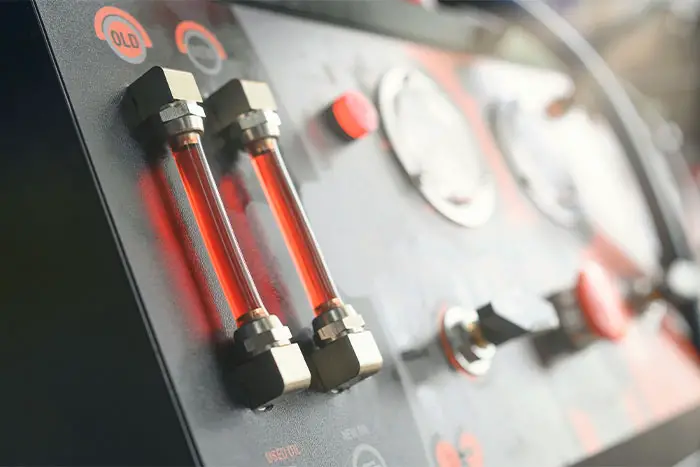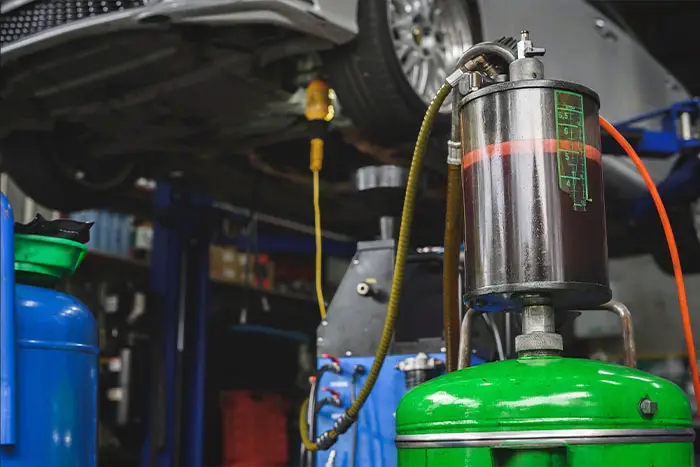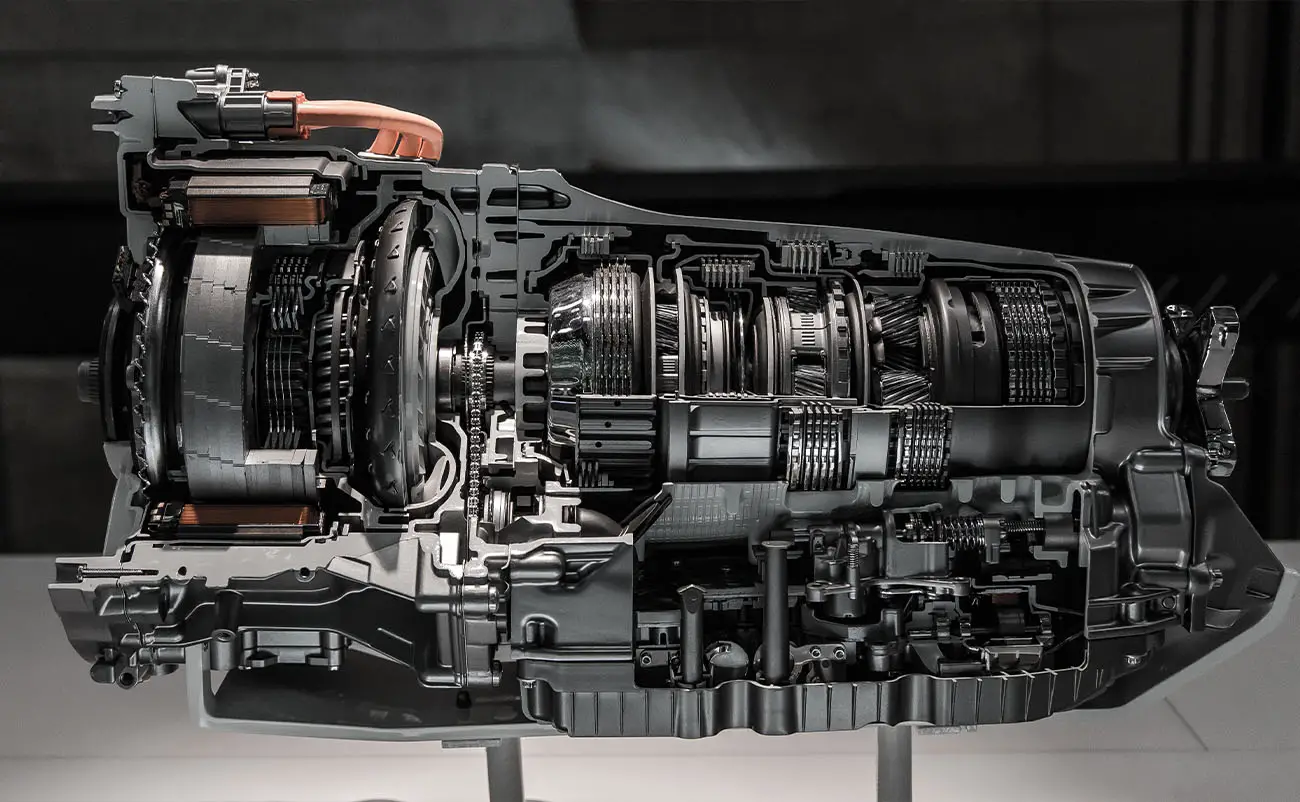If you own a vehicle, you already know that you need to perform regular oil changes as part of your car’s maintenance routine. However, you might be wondering whether a transmission flush is necessary or not. Your mechanic may have even recommended a transmission fluid flush already, but you aren’t quite sure what that is. So, just what is a fluid flush, and does your car need one? We will tell you everything that you need to know about this vehicle service and help you decide whether your car needs a flush or not.
Table of Contents
What Is A Transmission Flush?

A transmission flush is an automotive service where the old transmission fluid is forced from the transmission and replaced by clean, fresh fluid. Automatic transmissions are extremely complicated pieces of equipment. Most cars today come equipped with automatic transmissions, but few people know how they work. The inside of the transmission contains different bands, gears, clutches, and passages for fluid. The transmission in modern cars is in constant communication with the car’s computer. The car’s computer tells the transmission when to shift based on your RPM level, the pressure of the transmission fluid, your speed, and other factors. Your automatic transmission fluid is a critical piece of this puzzle.
Your transmission fluid helps to keep these parts lubricated and operating correctly. As transmission fluid ages, the constant exposure to heat and friction causes it to break down. When it breaks down, it can no longer perform its job correctly and must be replaced with new fluid.
A transmission flush accomplishes this task. Your transmission is connected to a flushing machine which will force all the old fluid out of the transmission. At the same time, it pumps new fluid into the transmission to replace the old fluid. This process of pumping out the old fluid and refilling it with new transmission fluid is called a transmission flush. Since it requires special equipment, it can be challenging to perform this task on your own. Most people opt to have a qualified mechanic perform this service.
Transmission Flush VS Transmission Fluid Change


When it comes time to perform a transmission service, the flush is not the only option out there. Some people dislike transmission flushes because they believe that they are bad for your transmission, and we will discuss the drawbacks of a flush later in this article. So, what other options are there?
A simple transmission fluid change is another way to get new transmission fluid into your car. This process tends to be a little messier, and it has a few drawbacks as well. For a simple fluid change, you will need to remove the transmission pan from the vehicle. Instead of using pressure to force the old fluid out of the transmission, you remove the pan and let the old fluid drain out of the system using gravity. Some transmissions even have a drain plug that prevents the need to remove the pan.
Once the fluid has drained, you will also want to replace the transmission filter. Clean the contact surface of the pan well, slip on a new gasket, and reattach the pan. According to your owner’s manual, make sure that you use the proper torque specs for the pan bolts. Overtightening these bolts can cause severe damage. Once the pan is reattached, then you need to refill your transmission with new fluid. Always check the fluid level on your dipstick with the car warm and running.
One of the major complaints about a system fluid change is that all the old fluid is not removed from the system. Much of that fluid remains in the torque converter even after the fluid is drained. Most estimates state that only about 60-70% of the old fluid is removed by performing a fluid change. Many people opt to perform a second fluid change a few weeks later to help ensure that all the fluid gets replaced.
Transmission Flush Cost
So, how much is a transmission flush? A transmission flush is not overly expensive. This service usually only costs about $300 at a reputable repair shop. An experienced mechanic can perform this job in about 30 minutes. One thing that has a significant effect on the cost of the job is how much automatic transmission fluid (ATF) your vehicle requires. The more fluid your car needs, the higher the price of the service will be.
Automatic transmission fluid runs about $5 – $7 per quart, but some vehicles require as many as 16 quarts of fluid. Plus, many cars require a particular ATF type containing special additives and detergents to prevent transmission problems. When it comes to labor, expect about a half-hour. The mechanic needs to remove the transmission cooler lines and connect those to the flushing machine. The machine then performs the fluid exchange. This service is typically not covered under warranty unless there is some underlying transmission issue that requires it.
Transmission fluid change costs can often be more expensive than a flush, and this is because the fluid change will require more time and effort. You will also need to purchase a new filter for the filter change and a new pan gasket. You might have to pay around $500 for a transmission fluid change at an auto repair shop.
Proper Interval For A Fluid Flush
So, how often will you need a transmission flush? The answer depends on your specific vehicle, and your owner’s manual will specify the maintenance interval for this particular service. When in doubt, you can always ask your dealership about your car’s maintenance schedule.
That being said, most vehicles will require this maintenance service every 40,000 – 50,000 miles. Waiting too long can cause contaminants and grime to build up and increase your chances of tranny problems. Your transmission system is not only complex but also expensive. Performing this preventative maintenance can help you avoid costly transmission repairs down the road.
Transmission Flush Drawbacks
You will inevitably hear from people who claim that a transmission flush is terrible for your vehicle’s transmission. When done correctly, this is not true. It is widely accepted that your transmission needs to have the fluid changed regularly. As long as the vehicle owner performs this service on time, a flush should present no problems.
However, there are instances where a flush might not be a good idea. That is usually when you have waited too long to perform this service. Once contaminants build up in the system, a transmission flush can push that trash into small passages in the transmission and cause blockages. This is not good! If your car has gone too long without service, then you should probably consider a transmission fluid change instead. In most cases, if your transmission fluid has more than 75,000 miles, then opt for the fluid change instead of the flush to help avoid potential problems.
The Bottom Line
Your transmission fluid must be changed regularly to keep your transmission system working correctly for the life of your vehicle. A transmission flush is a great way to accomplish this, and it also helps ensure that all of the old fluid is removed from the system. A fluid flush is not an expensive item as most service centers will perform this task for around $300. If your car has more than 40,000 miles, then you should strongly consider getting a flush performed – especially if you have noticed your transmission not shifting like it once did.
Frequently Asked Questions
Are transmission flushes necessary?
Changing the fluid in your automatic transmission is necessary. Some might argue whether a transmission flush or a simple fluid change is better to accomplish this. When done correctly, a transmission flush is safe and should present no problems to your vehicle. If your car has 40,000 miles or more, it is probably time to have this service performed.
How do you know if you need a transmission flush?
If your transmission fluid has more than 40,000 miles on it, then it is time for a transmission flush. Similarly, when you check your transmission fluid, you might notice that it appears dark or smells burned on the dipstick. In that case, you should have a flush performed immediately. In some cases, you might even notice your transmission slipping or lagging between shifts. This can signal the need for a fluid flush as well.
What are the risks of not having a transmission flush?
Failure to change your transmission fluid can have many negative consequences. First, your transmission might start to slip or hesitate between shifts. Old and dirty fluid can also lead to damage to the bands and clutches inside your transmission. Finally, failure to perform this service can lead to total transmission failure if left unattended for too long. You would then be left with the expensive bill of a transmission rebuild or replacement. Many people ask, “How much does a transmission flush cost?” At only about $300, that is much cheaper than rebuilding your transmission because you decided not to change the fluid!
Is a transmission flush good or bad?
In most cases, a transmission flush is good! You want to remove the old contaminated fluid from the system and replace it with fresh, new fluid. If the fluid in your transmission is timeworn, then you might opt for a fluid change instead. Flushing a system that has gone that far could potentially push debris and contaminants into places inside the transmission where they do not belong. This could cause more significant problems with your transmission.

